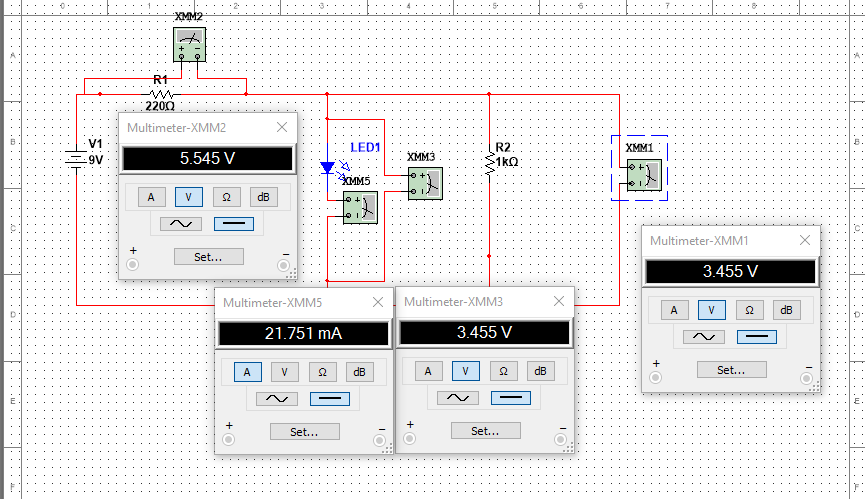I'm a beginner to circuits. Unlike many other questions, my circuit involves a parallel circuit with a LED on one path but a resistor on the other, as shown in the picture.
Q1: assuming the LED has a 3V voltage drop, does this mean R1 will have to drop 6V even if the LED is on parallel?
Q2: If I know the voltage drop of R1, just how can I compute the CURRENT that will go through each path? Since the LED has a constant voltage drop but R2 has a constant resistance I don't think I can use any laws I know so far — LED's and resistors are not the same things. I only know how to compute the current if both were LED's or resistors.
P.S. This sort of looks like a voltage divider, but the problem is that the LED does not have a separate ground but is connected back to the same battery, which then makes the circuit parallel and I'm assuming thing work differently. (And it did in my simulator)

simulate this circuit – Schematic created using CircuitLab

